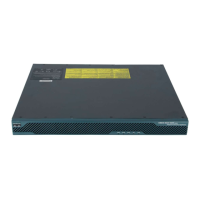Implementing IPSec Network Security on Cisco IOS XR Software
Configuration Examples for Implementing IPSec Network Security for Locally Sourced Traffic and Destined Traffic
SC-140
Cisco IOS XR System Security Configuration Guide
Configuration Examples for Implementing IPSec Network
Security for Locally Sourced Traffic and Destined Traffic
This section provides the following configuration examples:
• Configuring a Static Profile and Attaching to a Tunnel-ipsec Interface: Example, page SC-140
• Configuring a Dynamic Profile and Attaching to a Tunnel-ipsec Interface: Example, page SC-141
• Configuring a Static Profile and Attaching to Transport: Example, page SC-142
Configuring a Static Profile and Attaching to a Tunnel-ipsec Interface: Example
The following example shows a minimal IPSec configuration where a static crypto profile is created and
attached to a tunnel-ipsec interface.
An IPSec access list named sample1 defines which traffic to protect:
ipv4 access-list sample1 permit ip 10.0.0.0 0.0.0.255 10.2.2.0 0.0.0.255
Step 3
crypto ipsec pmtu
pmtu
Example:
RP/0/0/CPU0:router(config-if)# crypto ipsec pmtu
1500
Specifies the default path MTU for the SAs that are
created under the interface.
• Use the pmtu argument to specify the value of
MTU in bytes. The range is from 68 to 9216.
Step 4
end
or
commit
Example:
RP/0/0/CPU0:router(config-if)# end
or
RP/0/0/CPU0:router(config-if)# commit
Saves configuration changes.
• When you issue the end command, the system
prompts you to commit changes:
Uncommitted changes found, commit them
before exiting(yes/no/cancel)?
[cancel]:
–
Entering yes saves configuration changes to
the running configuration file, exits the
configuration session, and returns the
router to EXEC mode.
–
Entering no exits the configuration session
and returns the router to EXEC mode
without committing the configuration
changes.
–
Entering cancel leaves the router in the
current configuration session without
exiting or committing the configuration
changes.
• Use the commit command to save the
configuration changes to the running
configuration file and remain within the
configuration session.
Command or Action Purpose

